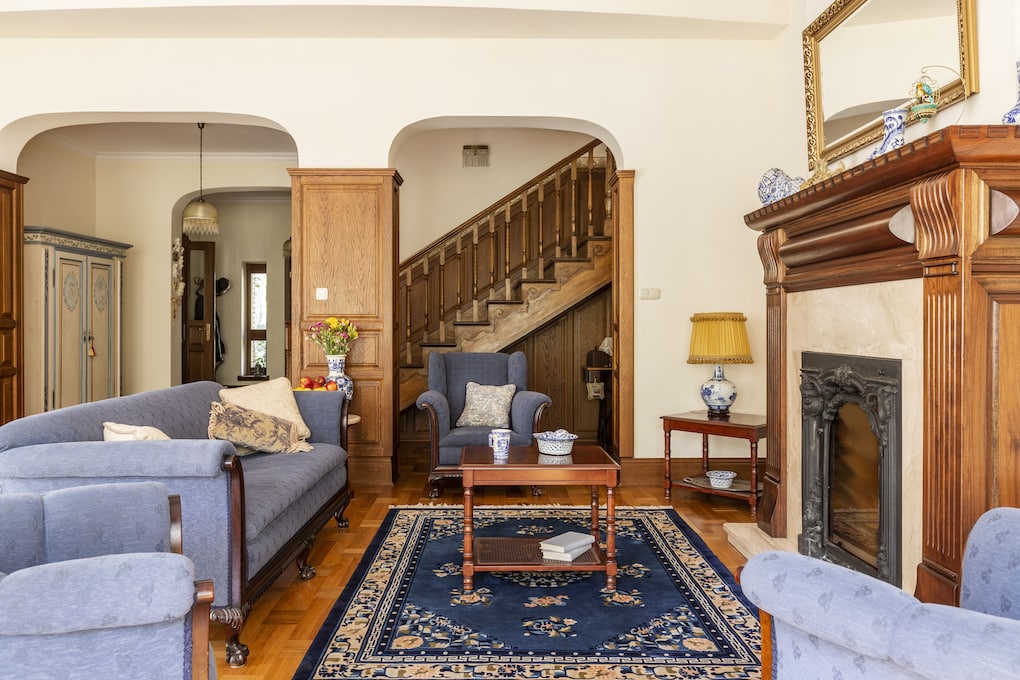Over the years, home design has changed and evolved. Things that were popular in the 20s, 30s, and 40s seamed way out of date in the 60s and 70s. Today’s homes are built entirely different, with more emphasis on modern and large open spaces. But how do you update older or antique house design?
Finding the right styles to mix and match with your home is an excellent way to breath new life into your home while maintaining a consistent feel. To help better understand each of these styles, we’re going to break down popular house plans over the decades. What characteristics they have, and what made them different from some of the houses that went before and came after.
Common House Designs Throughout the Decades
While designs often differ depending on where the homes were built and who designed them, there were still plenty of industry style trends. Each decade still saw different commonalities and characteristics. And depending on how “trendy” a homeowner wanted to be, sometimes the homes would take a very forward-thinking approach in their design.
1920s Designs
The big thing to note in the 1920s was the Art Deco design style. Throughout the 20s, homes were filled with luxury fabrics and sharp lines. Rich color palettes filled rooms as homeowners were seeking a glamorously eclectic look for their homes.
As you may have noticed, it’s been 100 years since the 20s, and we’re back in them right now. The 2020s have brought back some of the 1920s design trends, including mosaic tile, free-standing tubs, bold colors, cocktail cabinets, and angular furniture.
Outside of these interior trends, houses were built tall with high roofs to show a certain elegance. Many would consider Bungalow to be a great descriptor for this style. Here’s a Pinterest board full of ideas and examples.
1930s Designs
Throughout the United States, the Great Depression subdued the more glamorous Art Deco styles and brought on a simpler time. Homeowners who were fortunate enough to keep their homes had to find ways to decorate and make beautiful what they had.
Clean lines and modern furniture were still standard in the 1930s, and homes still utilized modern artwork in precise amounts. Architectural Digest lays out some of the beautiful designs that aired throughout this time period.
The exterior of homes became more cottage-like and often gave off a certain European or Victorian type aesthetic. Most of these designs were smaller due to the trying times.
1940s Designs
Starting in the 1940s, a continued uptick in the economy and bills allowing veterans to buy houses at a cheaper cost. Additionally, mass production was becoming more popular and allowing homes to be built faster. This made them much cheaper, and more Americans than ever could start buying their own homes. This also helped the suburban areas develop and grow.
On the interior, the home design was very transitional. Builders and designers were trying different things and learning about what would work well. Kitchens often took a curved floor plan in hopes of improving efficiency. Blue was a trendy color among other bold colors. Foyers or entryways became places to make a statement.
The exterior of homes were still small, and many could be considered traditional, colonial, and sentimental in design. Bungalows were very popular design styles, but home builders were working towards new ideas.
1950s Designs
The 1950s were years of innovation and originality. Things were being done in ways that were never before. New homes moved away from the traditional styles and toward a more modern approach. Clean lines, lots of windows, sliding glass doors, and similar ornamentation characterized the exteriors of these homes.
The 1950s also ushered in Scandinavian design and pastels. Instead of colors being bold, they took a softer yet striking approach. Pinks, yellows, light blues, and greens were all very common in an attempt to make every space very light and airy. Modern colors such as white and black were also coming into play, and homeowners weren’t afraid of contrast.
Some of the brightest contrasts in a room would come in the flooring and seating arrangements, with a big emphasis on patterns and bold colors on the floors. Fabrics often featured florals, and decor was often expressive with multiple statement pieces in each room.
1960s Designs
In the 60s, new homes were often built in a ranch style. This new elongated design made them different from the more common bungalow that predated them. But, the new style definitely took root as many ranch-style homes were continually built for years to come. For some fun comparison, a home in 1960 would cost you around $11,900. That’s equivalent to around $98,000 in today’s dollars.
Throughout the interior of the 1960s, homes were often designed with shag carpet and flashy colors. The contrast was at a high, and many times homes wouldn’t actually match at all. The interior design style in these homes would now be considered retro-modern. This design style is commonly associated with the 50s and 60s.
1970s Designs
Contemporary Design fueled the 1970s and made it one of the more popular trends. These homes became spacious and were still built in a ranch or rambler style, often being built in a rectangular or L-shape. One problem that today’s homeowners will have with homes built in the 1970s is that they weren’t insulated well. This led to high energy bills and lots of inefficiencies.
Most homes in the 70s highlighted three bedrooms that were all large in size and scale when compared to the rest of the home. The homes would often feature large plate glass windows and have metal or concrete elements.
On the inside of the homes, decor took a contemporary twist as well. Hanging chairs weren’t uncommon, along with wicker and willow accents throughout rooms. Other trends include fringes on everything, retro colors, velvet, and animal prints.
1980s Designs
And now we’re into the 80s. This time period was different from the others as it was one of the first times new homes came with appliances. That’s right, just 40 years ago, some homes would be built without including today’s standard appliances such as a refrigerator. Blinds and drapes also become more “standard” throughout this decade.
Interior design trends regularly include lots of curtains and drapes, sofas and furniture were built deeper, and brass accents were very common. The 80s also brought a surge in house plants. No matter where you were, it wasn’t uncommon to have several houseplants and, of course, an ivy draping down from your ceiling.
Outside these homes were also ranch style, but they were likely larger than those built in the 70s. A lot of the homes were now pushing over 2,500 square feet. This is a huge step up from the homes at the beginning of the decade that were often only 1,000-1,500.
1990s Designs
Starting in the 90s, homes became much less cookie-cutter and more unique. With more homes being built and different places in the United States becoming more “their own,” a number of different styles could be regularly seen. Nonetheless, some of the most common designs used throughout this time period were colonial and contemporary. Homeowners that wanted a more traditional look would build a colonial house, and those that wanted something more trendy would lean towards contemporary.
Interior design trends were also all over the place in the 90s, and some of the “cringy” trends will still strike a chord a bring a memory to mind. Lava Lamps were a huge one, and they were in almost every house by the 1990s. Bright purple was a color that everyone wanted to accent with, and inflatable furniture seemed like a good idea.
Some other fun things were landlines that took the form of random items such as a hamburger or banana. Carpet was installed continuously throughout almost every space. Glass blocks were popular in design, and furry picture frames weren’t all that uncommon.
2000s Designs
The exterior of a 2000s home would often find itself mimicking a bungalow-type look. While homes in the 2000s were much larger than those built in the early 1900s, it wasn’t uncommon to start seeing some of the architecture starting to make its 100 year swing around.
Trends of the 2000s were very technology-focused and usability-focused. Homeowners were looking to utilize their homes more and make them more inviting. Shabby chic was common in bedrooms, and living rooms almost always took the form of entertainment center superstations.
Many of the paint colors of the 2000s consisted of reds and browns with lots of accents from furniture and often white cabinetry. That’s right, painting your cabinets white isn’t a recent trend at all.
2010s Designs
The 2010s brought the rise of modern into homes throughout the United States. There was a decline in the economy starting in 2008 as the Great Recession started. But, homeowners that were building and designing interior spaces started pushing towards more new ideas and possibilities.
The big difference in the modern approach of the 2010s is the ways that items of the mid-1900s were used in a new and modern way. Many would say this made the 2010s the years of mid-century modern. Brass and bronze finishes, hints of wallpaper used to accent, and antique furniture will all different components of this design.
Colors throughout the 2010s shifted towards blues and grays. This made for more neutral walls that would complement a variety of different design styles. The oddest of all the trends throughout this time period were the painted floors. You heard that right; people were painting their floors.
2020s Designs
And we’ve arrived at the present day. The 2020s! The homes being built today utilize technology in never-before-seen ways and are absolutely beautiful. The big emphasis on design in 2020 is remodels. Building homes in this decade is looking to continue being expensive, and some homeowners or buyers can see that as a risk. So, instead of building new, remodels are on the rise.
Sustainable siding, windows, and beautiful garage doors are all common throughout this style. When it comes to exteriors, homeowners are using paint colors and the use of natural wood and stone to add character to homes. Whites, grays, and browns are all common colors used throughout the exteriors.
Inside, older homes are receiving a facelift to give them a more modern and customized approach. With the housing market booming, homeowners are thinking more about what would look great and work best for them without worrying too much about resale.
How to Update the Style of Your Home
Updating the design and style of your home can be as simple as painting the walls and switching up the furniture. But, if you’re thinking of doing a full remodel, it’s best to call in the professionals to get the most out of your investment.
If you’re looking to rework your home, we’d love to take a look. Thomas Buckborough & Associates has been around the block and over 30 years of combined experience, we can help ensure that your home turns out timeless. We offer a variety of services, ranging from a standard kitchen remodel to a full design-build project. Contact us today to learn more!


